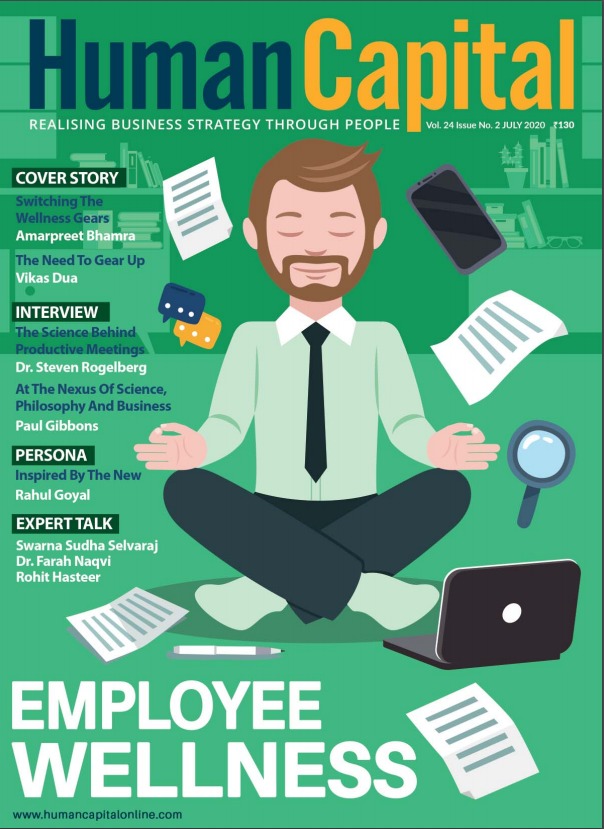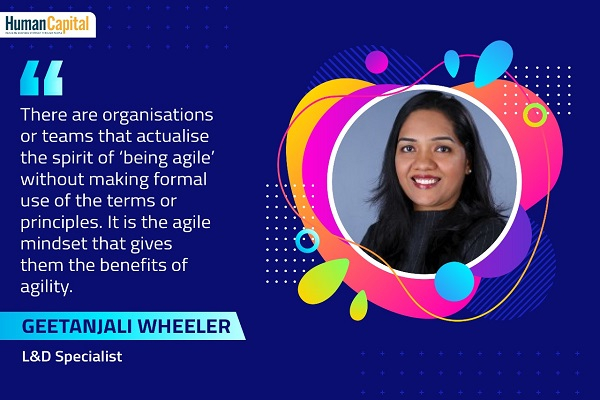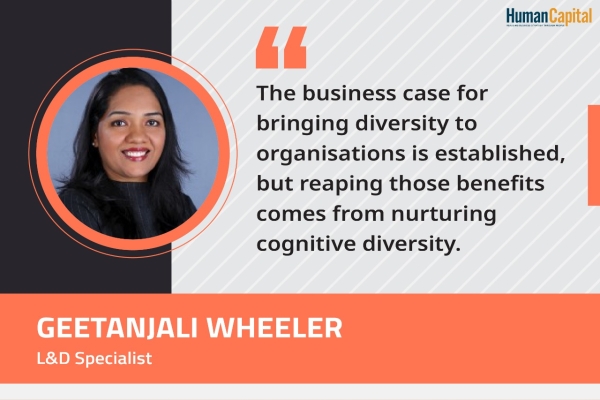A big transformation is about a lot of small steps – some successful and some not. A culture of continuous transformation cannot thrive in an environment where failures and mistakes are criticised.
If we look back to the beginning of time, we would say with utmost certainty that mankind has undergone a huge transformation. We concur that change is the only constant, and yet, for most of us, resistance is the first reaction to change. We can also say that people react differently to change, and yet, mysteriously at some level, some patterns and similarities can be drawn to understand the process of change. An understanding and acceptance of this process render a strong foundation for ‘leading change’, be it at an individual, team or organisational level.
The ‘Boiling Frog’ Syndrome
an aspect of change that presents itself so slowly that one does not realise unless it sometimes is too late!
Ever heard of the ‘Boiling Frog syndrome?’
What will a frog do if it is put in hot water? … Of course, it will jump!
However, if the frog is put in cold water and the water is gradually heated, the frog fails to comprehend what will transpire. It keeps adjusting to the temperature until it is nearly impossible to jump out. The analogy is often used as a metaphor to indicate how easy it is for us to be oblivious to the changes around us - we may even fail to realise that we are sitting on a time bomb that is about to explode!
Just think about it and you will find numerous examples at all levels. For example:
• How many reported cases of domestic violence are actually about the first instance?
• Does a team become demotivated overnight?
• Do organisations lose sight of the big picture and fast forward themselves into extinction in a day?
…and famously, did the 2nd wave of COVID-19 hit us this hard because all of us collectively at some level or the other failed to recognise the signs?
A Transformation Mindset
In the context of continuous transformation, for me, it is a mindset - just like when you think of ‘Agile’, there are organisations or teams that actualise the spirit of ‘being agile’ without making formal use of the terms or principles. It is the agile mindset that gives them the benefits of agility.
Since the last year, the topic of mental wellness has found a near permanent slot in boardroom discussions. We cannot recall the last instance of the word ‘resilience’ getting such a mention. There is no doubt that resilient individuals make resilient teams and these teams collectively make an organisation resilient. Similarly, continuous transformation strategies and discussions, limited only at the top, often find it hard to successfully go beyond the exercises of walking the wall, brainstorming and postits. Mostly, it is either the lack of information or too great a confusion, and, transformation project fatigue has gotten added to the list.
Transformation need not be huge and does not have to be all about technology. Brian Tracy’s simple quote which states that practicing the philosophy of continuous transformation is like getting a little bit better every day is worth a mention! Transformation goals must support the business strategy. So, whether it is a transformation of process, culture, brand image or even business model – must be integrated towards building newer organisational capabilities. The thing about transformation is also that we may not always have the know-how.
The Spaghetti Principle
Lars Sudmann explains how organisations can learn from the Spaghetti principle when operating in a dynamic environment with no credible history of results available. You have to try out and see what sticks. Has the pandemic not taught us that? There was no play book and the corporate world sort of came together to try, test and share. We saw the application of agile, design thinking principles, etc. at a lightning speed. Employee engagement and collaboration found new meaning in the virtual world. I really do not think we could have achieved this without having the mindset to do so!
A big transformation is about a lot of small steps – some successful and some not. A culture of continuous transformation cannot thrive in an environment where failures and mistakes are criticised. It is the mindset of looking at failures as learning and the culture of celebrating losses as equally as wins which fuel continuous transformation. It is important for people to feel psychologically safe to discuss failures and opposing views with respect. This people mindset is what shapes the organisation’s mindset and drives innovation. It does not matter if that is incremental or transformational.
I want to come back to a point discussed very briefly in the earlier part of this article – why do organisations need to invest in sustaining continuous transformation?
The success of a big transformation project does not mean that the organisation can hibernate. The ability to sustain continuous transformation comes from:
• Investing in building people capabilities because it is not an option! Have a look at the top 10 skills of 2025 as per the “Future of Jobs report” released by the World Economic Forum in 2020. All the skills mentioned there have a bearing on an organisation’s ability to continuously transform. E.g. Analytical thinking, complex problem solving, active learning etc.
• Having a compelling DEI strategy to attract and retain diverse teams. There is enough evidence and research that backs up the relationship between diversity and problem solving, creativity and innovation in teams
• Dedicating talent and teams for transformation – this is easier said than done, but leading transformation projects with a day job divides attention. How many times can we be confident that it will not have an impact on the outcomes?
• Building an environment conducive for transformation projects to build roots in the organisation’s ecosystem. E.g. making data driven decisions, strengthening communication across levels, empowerment of teams, rewarding and recognising the desired behaviours
• Keeping the customer at the core of the decision-making – what means value for the customer in this disruptive world is a moving target - it will constantly shift because of the rapid pace at which everything around us is changing. This is why flexibility and agility are a must!
It is important to continually assess the big picture as you do not want to be short-sighted as an organisation and join the group of companies that only remain etched in history – simply because they refused to respect the change needed. Whether your organisation is a leader or not – this is about survival! We also see organisations with big plans and making strategic transformational decisions for all the right reasons, but failing miserably because of all the wrong reasons. For instance, the execution was not thought through or people just lost the drive.
The invisible culture of the organisation is not what it paints on the walls or uses as screen savers. What the organisation allows as the culture to breed is what its reality is going to be. If we want to build a culture of continuous transformation, it is important to be conscious of the fact that the term “continuous” has to qualify the continuance of purpose driven actions. It is not something that has a start and end. This is why ‘continuous transformation’ is better achieved as a mindset!
Do you think hybrid work arrangements would be a common feature of the workplaces going forward?
Trending
-
SBI General Insurance Launches Digital Health Campaign
-
CredR Rolls Out 'Life Happens' Leave For Its Employees
-
Meesho Announces 30-Week Gender-Neutral Parental Leave Policy
-
Microsoft Unveils Tech Resilience Curriculum To Foster An Inclusive Future
-
60% Indian Professionals Looking For Job Change Due To COVID: Survey
-
SpringPeople And Siemens Collaborate For Digital Transformation Push
-
86% Professionals Believe Hybrid Work Is Essential For Work Life Balance: Report
-
Almost 1 In Every 3 People's Personal Life Affected Due To Work Stress
-
Meesho Rolls Out Reset And Recharge Policy For Employees
-
80% Of Talent Leaders & Academics Say Pandemic Changed Skill Needs For Youth: Report
-
Hero Electric Rolls Out 'Hero Care' Program For Employees
-
Human Capital In Collaboration With ASSOCHAM Hosts Virtual Conference
-
IKEA India, Tata STRIVE Collaborate To Create Employability And Entrepreneurship Opportunities
-
SAP India, Microsoft Launch Tech Skilling Program for Young Women
-
DXC Technology, NASSCOM Collaborate For Employability Skills Program
-
Lenskart To Hire Over 2000 Employees Across India By 2022
-
Mindtree Launches Learn-and-Earn Program
-
Tata AIA Extends 'Raksha Ka Teeka' To Its Employees
-
Swadesh Behera Is The New CPO Of Titan
-
NetConnect Global Plans To Recruit 5000 Tech Professionals In India
-
Hubhopper Plans To Hire 60% Of Indian Podcasters By 2022
-
Corporate India Needs More Women In Leadership Roles: Report
-
Aon to Invest $30 Million and Create 10,000 Apprenticeships by 2030
-
Tech Mahindra Launches ‘Gift a Career’ Initiative for Upskilling of Youth
-
40% Women Prefer Flexible Working Options in Post-COVID World: Survey
-
3 out of 4 companies believe they can effectively hire employees virtually: Report
-
Vodafone , CGI and NASSCOM Foundation launch digital skills platform
-
Odisha: Bank, postal employees to deliver cash for elderly, differently-abled persons
-
Skill India launches AI-based digital platform for "Skilled Workforce"
-
Hiring activity declines 6.73% in first quarter: Survey
-
70% startups impacted by COVID-19 pandemic
-
Bajaj Allianz Life ropes in Santanu Banerjee as CHRO
-
Over 70 Percent MSMEs look at cutting jobs to sustain businesses
-
93 Per Cent employees stressed about returning to office post-lockdown
-
Johnson & Johnson India announces family benefits for same gender partners
-
Indian firms turning friendly towards working mothers
-
Welspun India names Rajendra Mehta as new CHRO
-
Wipro partners with NASSCOM to launch Future Skills platform



Human Capital is niche media organisation for HR and Corporate. Our aim is to create an outstanding user experience for all our clients, readers, employers and employees through inspiring, industry-leading content pieces in the form of case studies, analysis, expert reports, authored articles and blogs. We cover topics such as talent acquisition, learning and development, diversity and inclusion, leadership, compensation, recruitment and many more.
Subscribe Now












































Comment